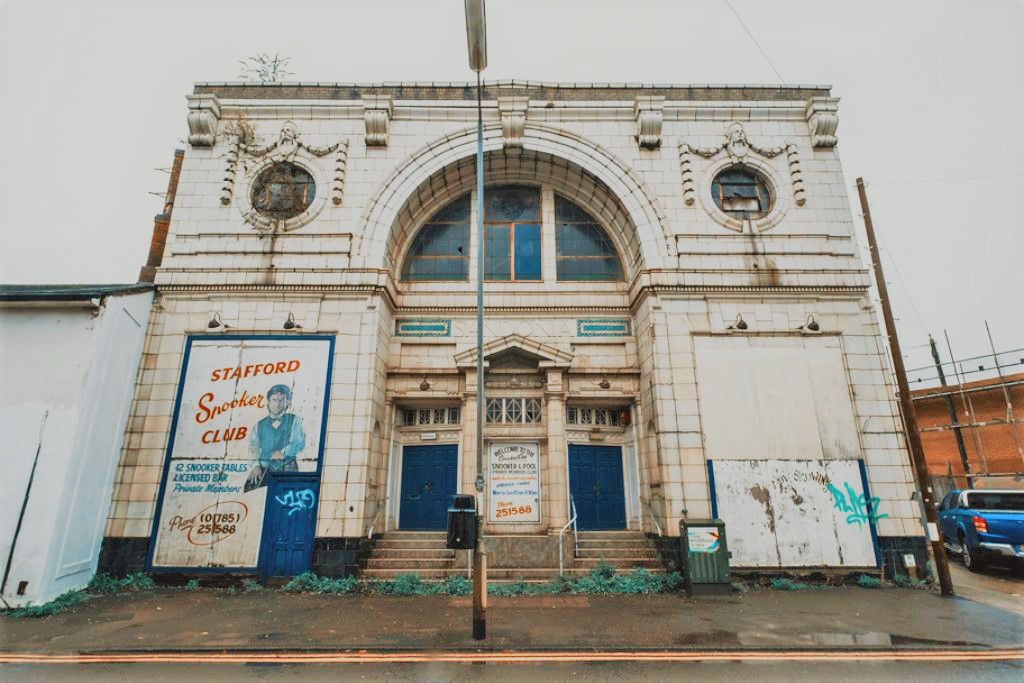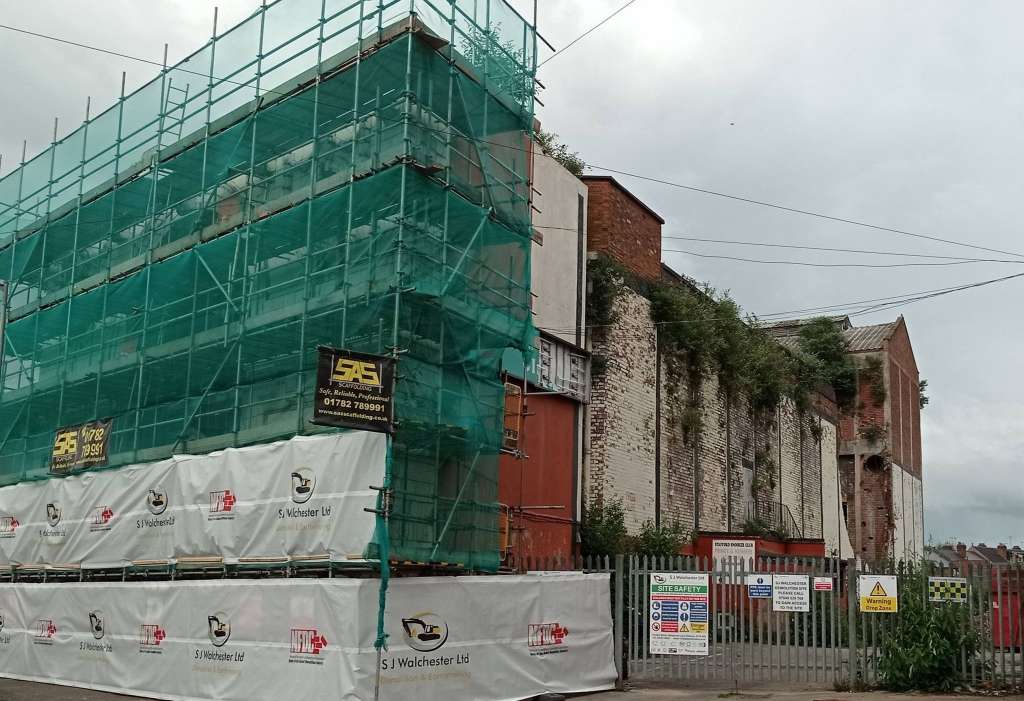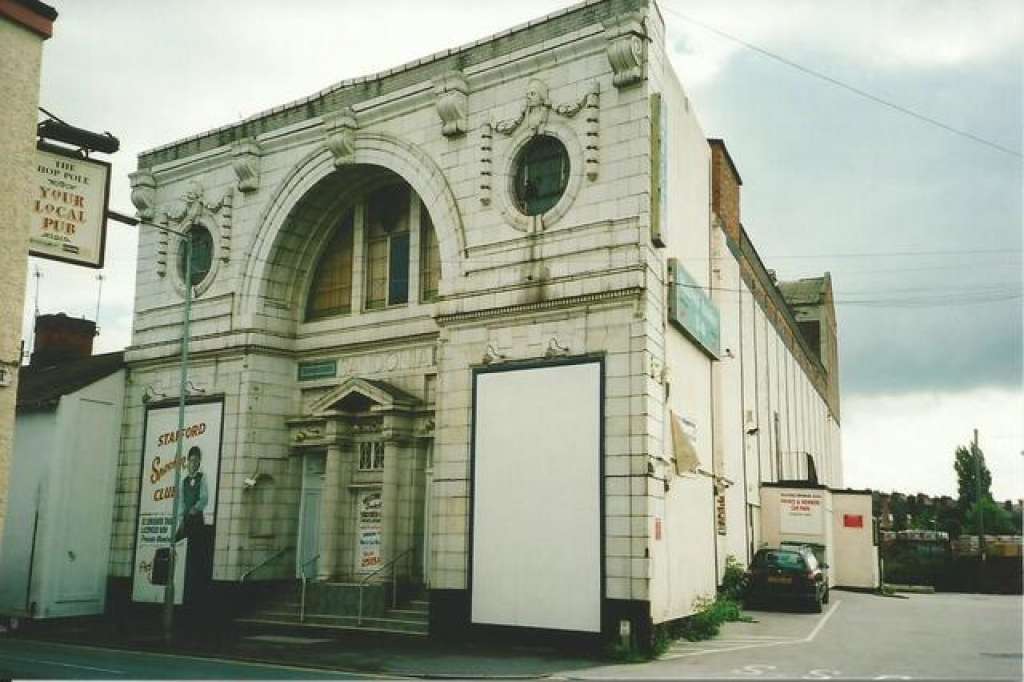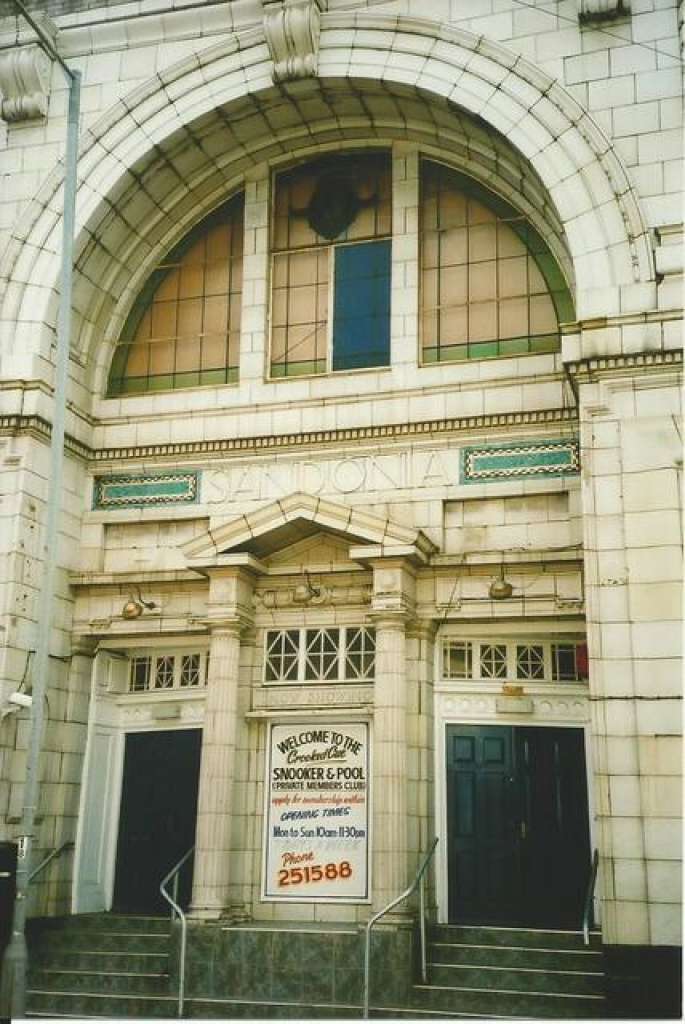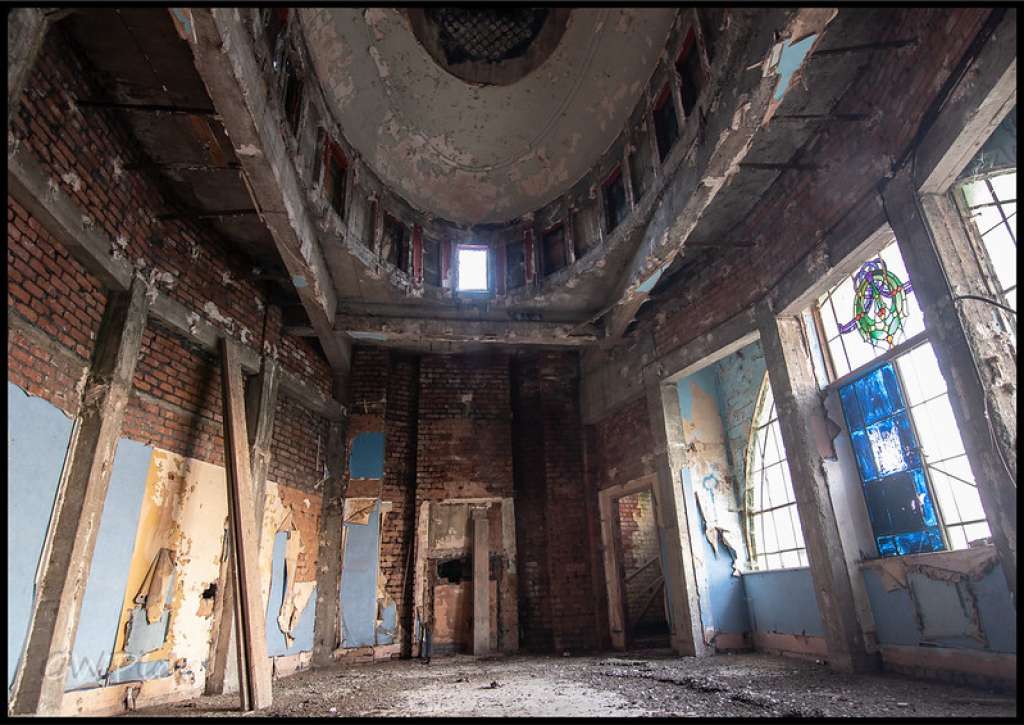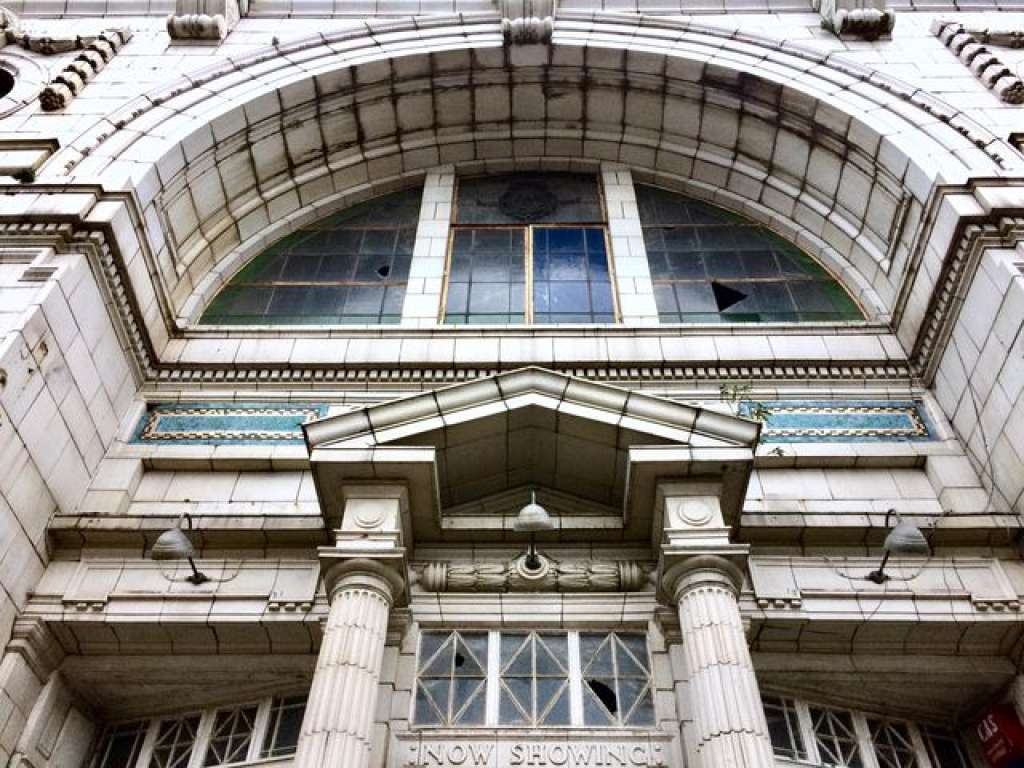PRESS RELEASE: SAVE legal action halts demolition of Stafford gem
7th July 2021
SAVE has taken successful legal action against the illegal demolition of a fine 1920 cinema, begun under cover of darkness last Friday evening.
Swift action by SAVE’s lawyers has stopped the demolition of the Sandonia in Stafford, a handsome 1920s cinema with a triumphal arch frontage. Without this action, demolition of the beautifully detailed classical front would have completed by the end of this week.
Our intervention followed an urgent SOS from local campaign group Save Our Sandonia over the weekend who reported that the owner of the Sandonia on Sandon Road had commenced demolition with no planning consent to do so. Contractors had already torn through part of the former auditorium to the rear of the site, with the façade scaffolded ready for dismantling.
Though the handsome cinema is not yet listed, SAVE’s lawyers successfully questioned whether the necessary planning consent had been applied for or obtained by the owner under permitted development rights. Stafford Borough Council confirmed that no application had been made, and that consequently, the demolition that had started unlawfully.
As a result, the Council has told the owner demolition must stop and that, if they want to demolish the building, a full planning application must first be submitted and approved.
Marcus Binney, executive president of SAVE Britain’s Heritage, says: “This pre-emptive demolition attempt is not only unlawful but totally unnecessary. There is extensive clear land beside the cinema which can be used for new housing without the need to demolish the eye-catching frontage and foyer behind, which help make this a historic landmark with real local character.”
Jack Pearce of the Save Our Sandonia campaign says: “SAVE's fantastic work has meant that a Stafford landmark has not been lost forever, as seemed likely when demolition workers started bulldozing the Sandonia late on Friday afternoon to the horror of Stafford residents. This is a beautiful and much-loved building which is an integral part of Stafford's social and industrial history. We thank SAVE enormously for its determination stepping in at the eleventh hour to preserve this building.”
SAVE argues that a conservation area must now be designated to protect the cinema and other historic buildings in the area, many of whom have strong ties to Stafford’s important role in the First World War and the shoe industry.
Staffordshire regiments played a crucial role in the fiercest battles of the First World War, and the shoe factories of Stafford played a major role in keeping these soldiers well shod. While some towns subsequently built Homes for Heroes to welcome the returning troops home, Stafford built a Cinema for Heroes, ensuring that the shoe workers who lived nearby, and the returning soldiers, were rewarded with a picture palace as classy as the latest in London or Liverpool.
SAVE offers profound thanks to its lawyers Richard Harwood QC and Harry Campbell and Susan Ring of Harrison Grant solicitors.
History
The Sandonia ‘Kinema’ and Theatre opened in 1920 as ‘cine-variety’ theatre, with both live performances and films being shown. It was designed by local architect Henry T. Sandy of Sandy & Norris, with an attractive white faience facade, reminiscent of this early phase of cinema building before the streamlined art deco style became the dominant form of cinema design in the 1930s onwards.
A huge central recessed arch forms the main entrance, which is flanked by one small shop either side (now boarded up), with the name ‘Sandonia’ in the stonework over the entrance. A semi-circular glazed central window is embellished with decorative oculi, garlands, and busts. Inside, a small foyer with two pairs of double doors lead to the stalls and stairs to upper foyer. The oval shaped upper foyer featured a glazed lantern.
The theatre is located some way to the north of Stafford town centre and initially it was not a great success. It was closed, sold and reopened several times until a sound system was installed in 1930 to allow it to screen 'talkies'.
Cinema use lasted until the 1960s at which point it was converted into a bingo hall, which ceased in 1990. In 1991 the stalls in the auditorium were converted to use as a snooker hall. The stalls rake was split into two terraces and the stage given a false floor over the original rake to provide level floors for the tables. A low false ceiling was installed over the stalls at balcony level and above the stage in the fly tower, but the safety curtain reportedly remained in situ. The projectors were removed and sold to a private collector.
Several applications to convert the building to an entertainment centre with bar in the late 1990s were refused on grounds on inadequate parking in the area, and the snooker hall subsequently closed in the early 2000s and the building has remained empty and disused since.
ENDS
Note to editors
1. For more information and images contact Ben Oakley, Conservation Officer at SAVE Britain's Heritage: ben.oakley@savebritainsheritage.org/ 07388 181 181.
2. SAVE Britain’s Heritage has been campaigning for historic buildings since its formation in 1975 by a group of architectural historians, writers, journalists and planners. It is a strong, independent voice in conservation, free to respond rapidly to emergencies and to speak out loud for the historic built environment.

